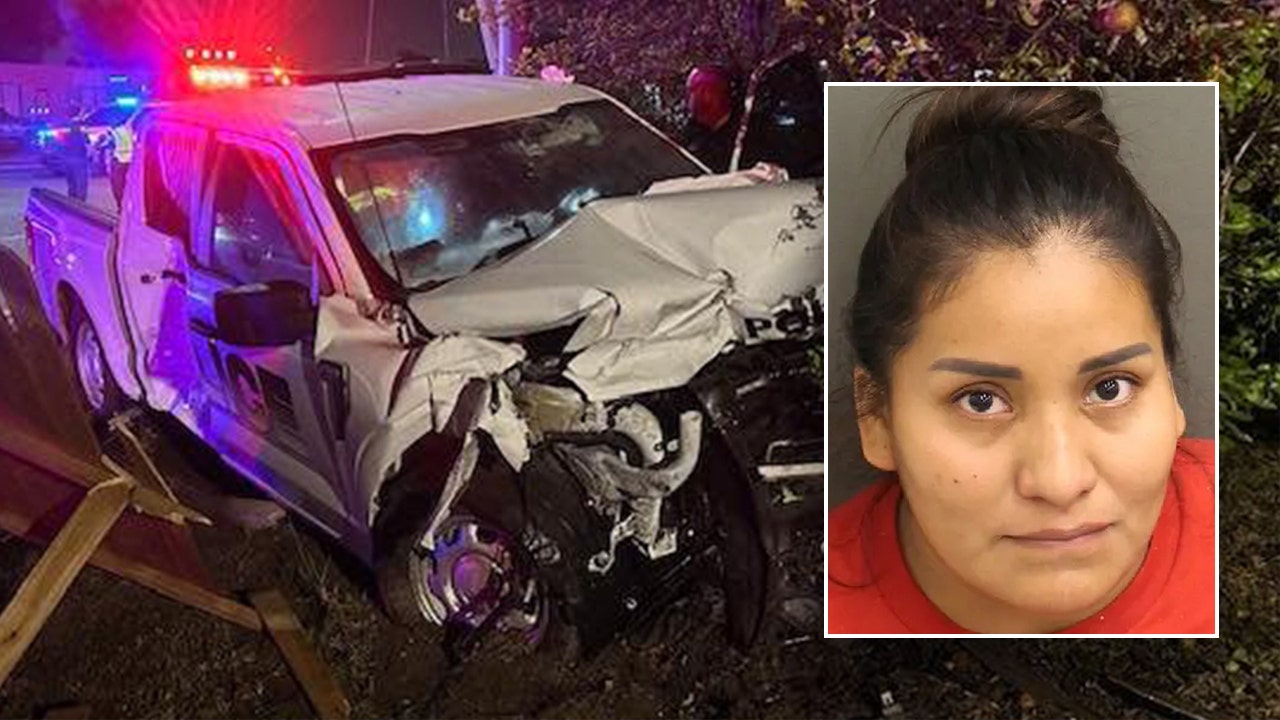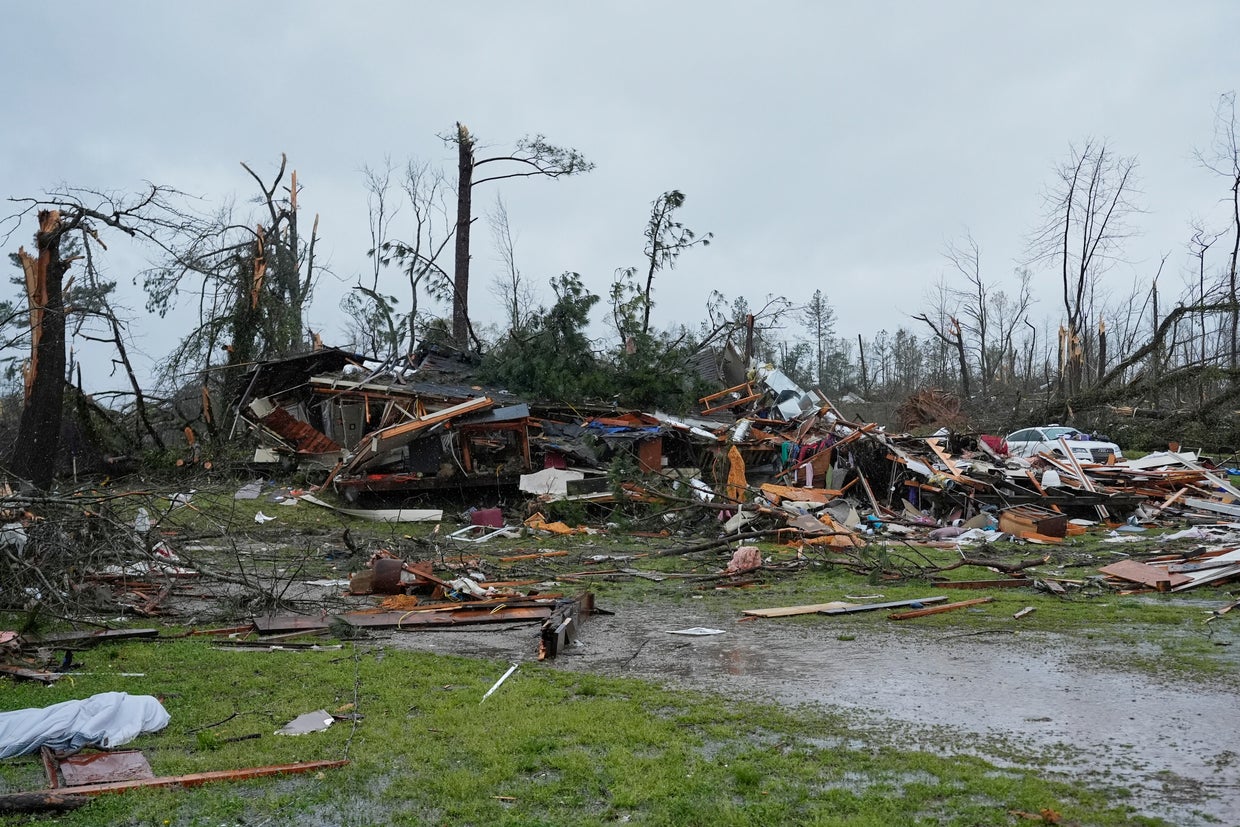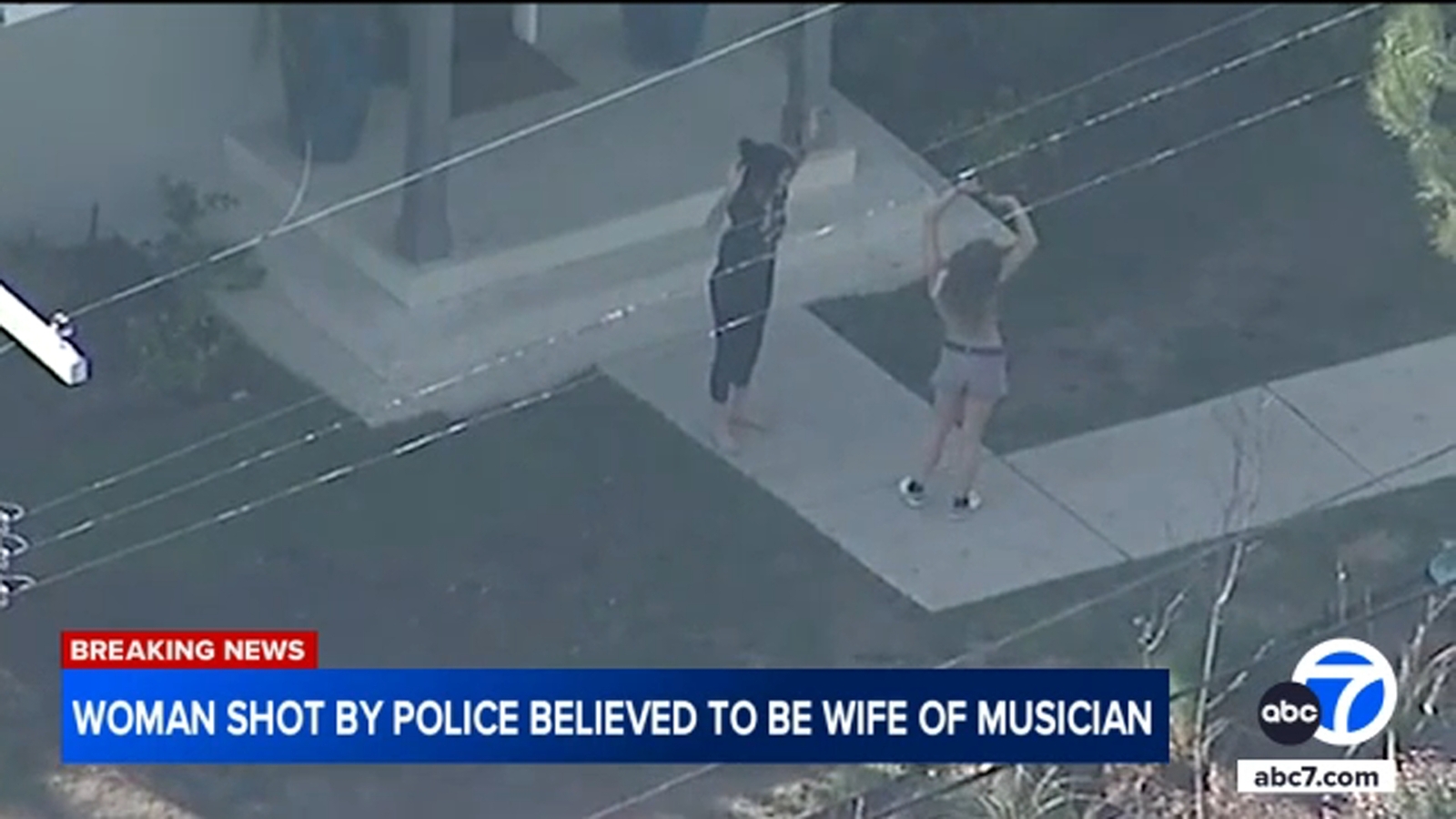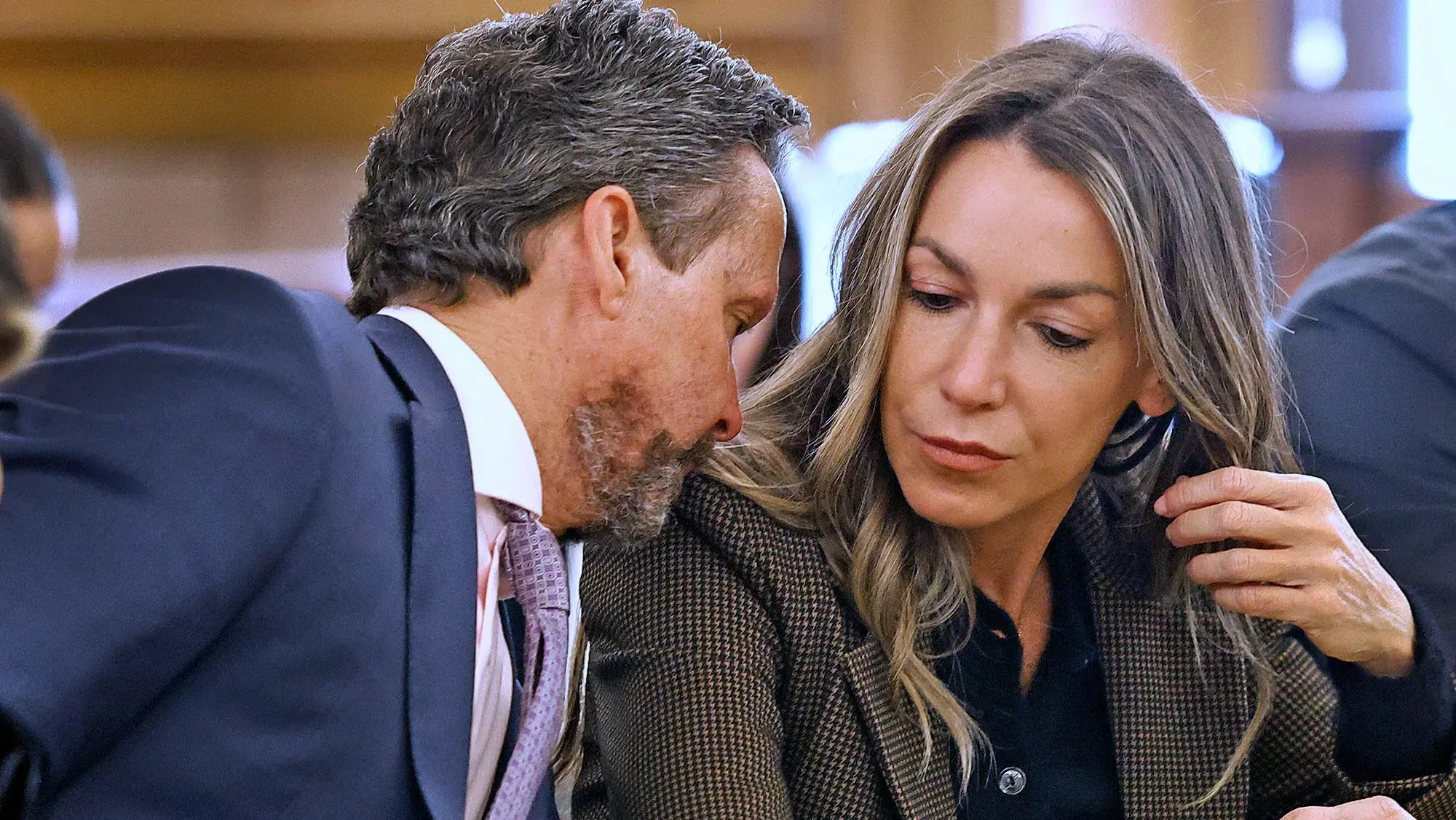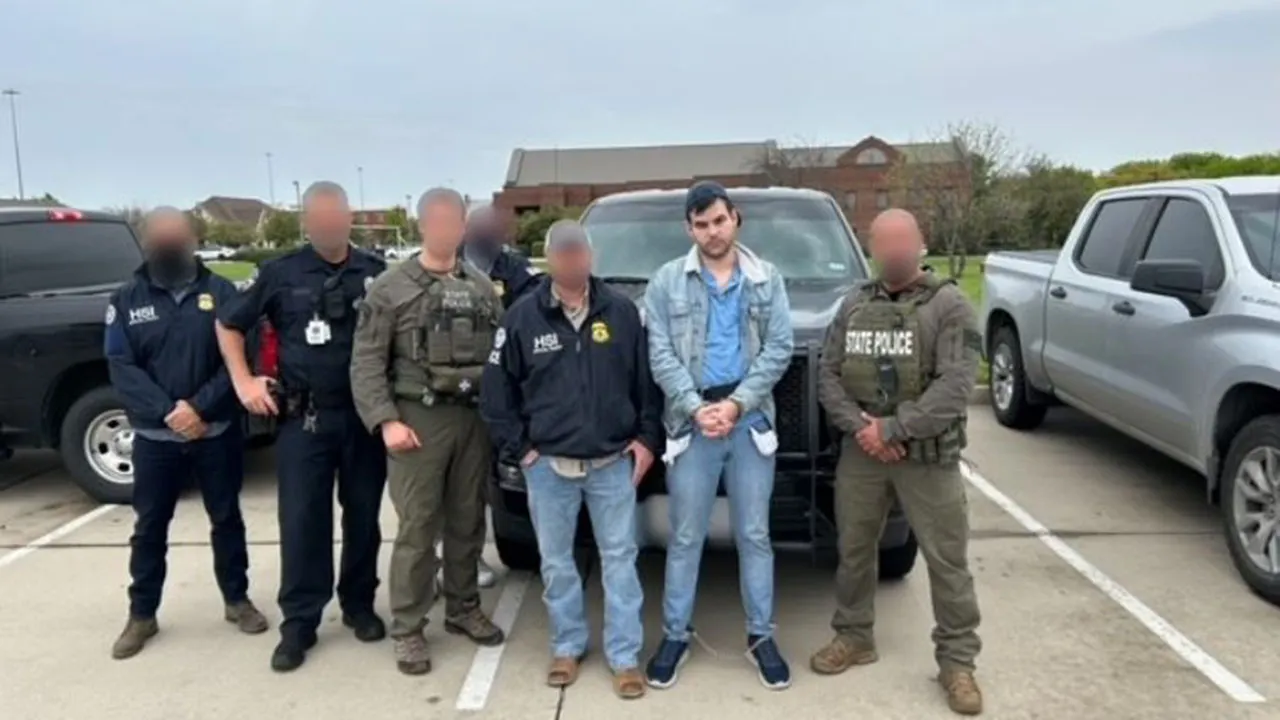Another round of torrential rain and flash flooding came Saturday for parts of the South and Midwest already heavily waterlogged by days of severe storms that also spawned some deadly tornadoes.
Day after day of heavy rains have pounded the central U.S., rapidly swelling waterways and prompting a series of flash flood emergencies in Missouri, Texas and Arkansas. The National Weather Service said 45 river locations in multiple states were expected to reach major flood stage, with extensive flooding of structures, roads, bridges and other critical infrastructure possible.
At least seven people were killed as the tornadoes destroyed entire neighborhoods, with more twisters possible in places this weekend. Flooding killed at least two more in Kentucky — a 9-year-old boy swept away Friday on his way to school, and a 74-year-old whose body was found Saturday inside a fully submerged vehicle in Nelson County, authorities said.
Ryan C. Hermens / AP
And interstate commerce is affected — the extreme flooding across a corridor that includes the major cargo hubs in Louisville, Kentucky and Memphis could lead to shipping and supply chain delays, said Jonathan Porter, chief meteorologist at AccuWeather.
The outburst comes at a time when nearly half of NWS forecast offices have 20% vacancy rates after Trump administration job cuts — twice that of just a decade ago.
Louisville Mayor Craig Greenberg said Saturday that the Ohio River had risen five feet in 24 hours and would continue to swell for days.
“We expect this to be one of the top 10 flooding events in Louisville history,” he said.
Since Wednesday, more than a foot of rain — or 30.5 centimeters — has now fallen in parts of Kentucky, and more than 8 inches has fallen in parts of Arkansas and Missouri, forecasters said Saturday.
Risk of flash flooding remains high
Flash flood emergencies continued to be issued Saturday across Arkansas, Mississippi and Tennessee, with more heavy rains and damaging winds in the mix.
Hundreds of Kentucky roads were impassable Friday because of floodwaters, downed trees or mud and rock slides, and the number of closures were likely to increase with more rain Saturday, said Kentucky Gov. Andy Beshear.
Downtown Hopkinsville, Kentucky, reopened early Saturday after floodwaters from the Little River receded, giving a much needed reprieve, but still more rainfall was on its way Saturday and Sunday, Mayor James R. Knight Jr. said.
“We got a little rain but most of it went north of us,” Knight said Saturday. “Thank goodness on that. Gave us a little break.”
Flash flooding is particularly worrisome in rural Kentucky where water can rush off hillsides into low-lying areas. Less than three years ago, dozens died in flooding in the Appalachian region of eastern Kentucky.
In north central Kentucky, emergency officials ordered a mandatory evacuation for Falmouth, a town of 2,000 people in a bend of the swelling Licking River, as the rising water summoned fears of damaging floods. The warnings were similar to catastrophic flooding nearly 30 years prior when the river reached a record 50 feet high, resulting in five deaths and 1,000 homes destroyed.
Over in Arkansas, weather officials pleaded with the public to avoid all travel unless absolutely necessary due to the widespread flooding.
On Saturday, BNSF confirmed that a railroad bridge in Mammoth Spring was washed out by floodwaters that caused the derailment of several cars. No injuries were reported, but BNSF had no immediate estimate when the bridge would reopen
In Frankfort, Kentucky, a 9-year-old boy died in the morning after floodwaters swept him away while he was walking to a school bus stop, Gov. Andy Beshear said on social media. Officials said Gabriel Andrews’ body was found about a half-mile from where he went missing.
The downtown area of Hopkinsville, Kentucky — a city of 31,000 residents 72 miles northwest of Nashville — was submerged. A dozen people were rescued from homes, and dozens of pets were moved away from rising water, a fire official told the Associated Press.
There are 390 road closures across the state right now due to flooding, mudslides and rockslides, Beshear said early Saturday morning.
“The main arteries through Hopkinsville are probably 2 feet under water,” Christian County Judge-Executive Jerry Gilliam said earlier.
Greensburg, a city in Southern Indiana, reported road closures and severe flooding on Saturday. Every community was experiencing “infrastructure that is extremely over regular capacity, which is leading to localized flooding,” the city wrote on social media.
Tornadoes leave a path of damage, and more could be coming
At least two reports of observed tornadoes were noted Friday evening in Missouri and Arkansas, according to the National Weather Service.
“TAKE COVER NOW!” the weather service said on X in response to the one on the ground around the small Missouri town of Advance.
Those killed in the initial wave of storms that spawned powerful tornadoes on Wednesday and early Thursday were a least five in Tennessee and one each in Missouri and Indiana, according to a CBS News count. They included a Tennessee man and his teen daughter whose home was destroyed, and a man whose pickup struck downed power lines in Indiana. In Missouri, Garry Moore, who was chief of the Whitewater Fire Protection District, died while likely trying to help a stranded motorist, according to Highway Patrol spokesperson Sgt. Clark Parrott.
Jon Cherry / AP
Tennessee Gov. Bill Lee said entire neighborhoods in the hard-hit town of Selmer were “completely wiped out” and said it was too early to know whether there were more deaths as searches continued. He warned people across the state to stay vigilant with more severe weather predicted.
George Walker IV / AP
“Don’t let your guard down,” he said during a Thursday evening news conference. “Don’t stop watching the weather. Don’t stop preparing yourself. Have a plan.”
With flattened homes behind him, Dakota Woods described seeing the twister come through Selmer.
“I was walking down the street,” Woods said Thursday. “Next thing you know, I look up, the sky is getting black and blacker, and it’s lighting up green lights, and it’s making a formation of a twister or tornado.”
By late Thursday, extremely heavy rain had fallen in parts of southeastern Missouri and western Kentucky and was causing “very dangerous/life threatening flash flooding” in some spots, according to the National Weather Service.
Flash flooding is particularly worrisome in rural areas of the state where water can quickly rush off the mountains into the hollows. Less than four years ago, dozens died in flooding across eastern Kentucky.
Extreme flooding across the corridor that includes Louisville, Kentucky, and Memphis, which have major cargo hubs, could also lead to shipping and supply chain delays, said Jonathan Porter, chief meteorologist at AccuWeather.

